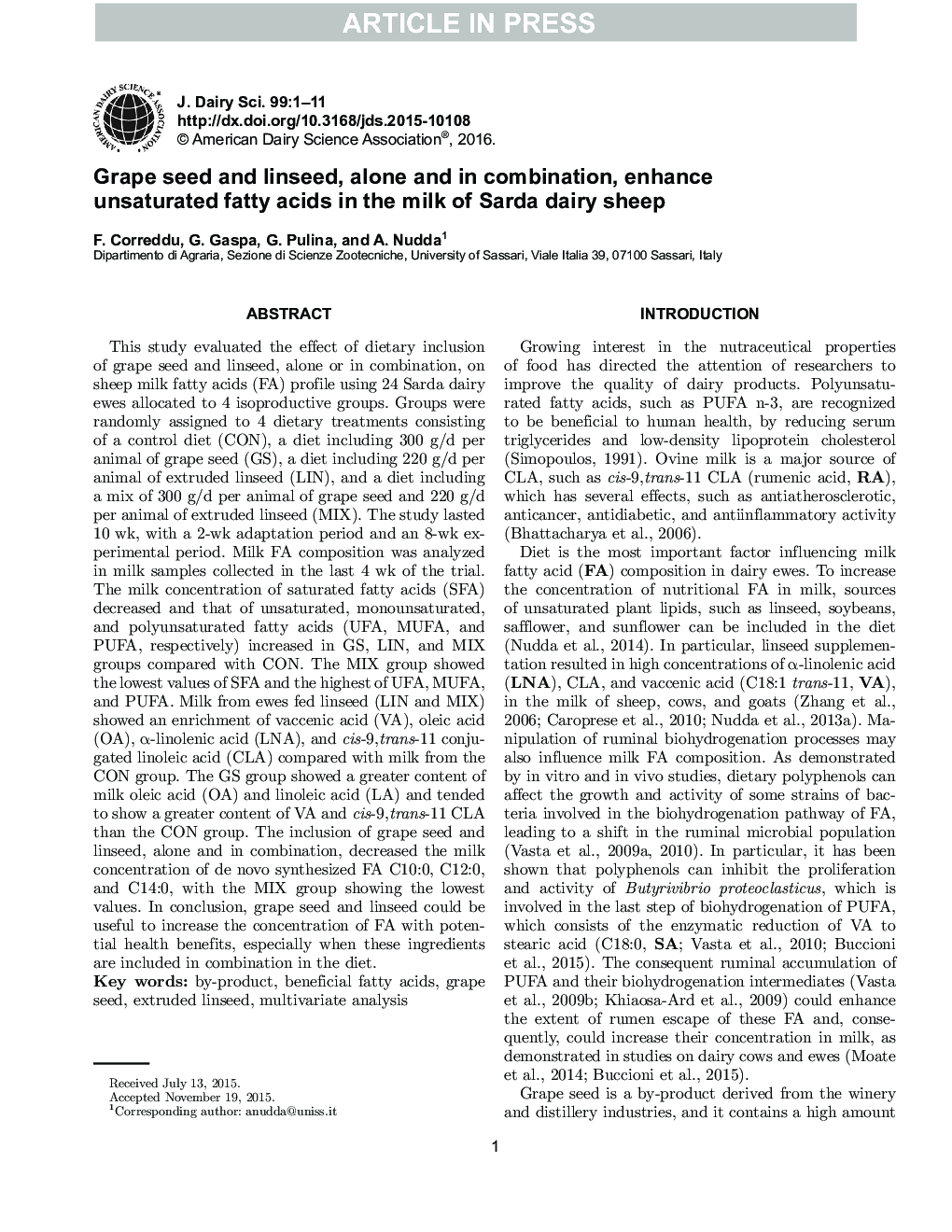| Article ID | Journal | Published Year | Pages | File Type |
|---|---|---|---|---|
| 10973203 | Journal of Dairy Science | 2016 | 11 Pages |
Abstract
This study evaluated the effect of dietary inclusion of grape seed and linseed, alone or in combination, on sheep milk fatty acids (FA) profile using 24 Sarda dairy ewes allocated to 4 isoproductive groups. Groups were randomly assigned to 4 dietary treatments consisting of a control diet (CON), a diet including 300 g/d per animal of grape seed (GS), a diet including 220 g/d per animal of extruded linseed (LIN), and a diet including a mix of 300 g/d per animal of grape seed and 220 g/d per animal of extruded linseed (MIX). The study lasted 10 wk, with a 2-wk adaptation period and an 8-wk experimental period. Milk FA composition was analyzed in milk samples collected in the last 4 wk of the trial. The milk concentration of saturated fatty acids (SFA) decreased and that of unsaturated, monounsaturated, and polyunsaturated fatty acids (UFA, MUFA, and PUFA, respectively) increased in GS, LIN, and MIX groups compared with CON. The MIX group showed the lowest values of SFA and the highest of UFA, MUFA, and PUFA. Milk from ewes fed linseed (LIN and MIX) showed an enrichment of vaccenic acid (VA), oleic acid (OA), α-linolenic acid (LNA), and cis-9,trans-11 conjugated linoleic acid (CLA) compared with milk from the CON group. The GS group showed a greater content of milk oleic acid (OA) and linoleic acid (LA) and tended to show a greater content of VA and cis-9,trans-11 CLA than the CON group. The inclusion of grape seed and linseed, alone and in combination, decreased the milk concentration of de novo synthesized FA C10:0, C12:0, and C14:0, with the MIX group showing the lowest values. In conclusion, grape seed and linseed could be useful to increase the concentration of FA with potential health benefits, especially when these ingredients are included in combination in the diet.
Related Topics
Life Sciences
Agricultural and Biological Sciences
Animal Science and Zoology
Authors
F. Correddu, G. Gaspa, G. Pulina, A. Nudda,
